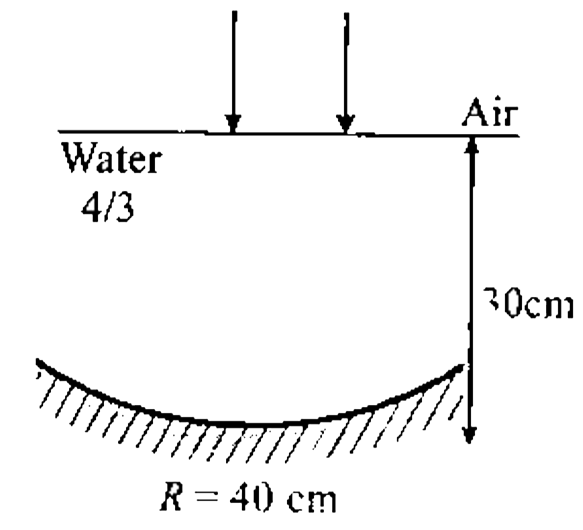Assertion:- Paraxial rays are always parallel to the principal axis.
Reason:- A parallel beam parallel to principal axis converges at the focal point.
If both Assertion Reason are True the Reason is a correct explanation of the Assertion.
If both Assertion Reason are True but Reason is not a correct explanation of the Assertion.
If Assertion is True but the Reason is False.
If both Assertion Reason are False.
The correct Answer is:D
Step by step video, text & image solution for Assertion:- Paraxial rays are always parallel to the principal axis. Reason:- A parallel beam parallel to principal axis converges at the focal point. by Physics experts to help you in doubts & scoring excellent marks in Class 12 exams.
Topper's Solved these Questions
- BOOK - ALLENCHAPTER - TEST PAPERSEXERCISE - PAPER 3100videos
TEST PAPERS
- BOOK - ALLENCHAPTER - TEST PAPERSEXERCISE - Part-1 Physics15videos
TEST PAPERS
- BOOK - ALLENCHAPTER - TEST PAPERSEXERCISE - MATHS18videos
TEST PAPERS
- BOOK - ALLENCHAPTER - TEST PAPER 4EXERCISE - PHYSICS45videos
TEST PAPER 4
- BOOK - ALLENCHAPTER - UNIT & DIMENSIONS, BASIC MATHS AND VECTOR EXERCISE - Exercise (J-A)7videos
UNIT & DIMENSIONS, BASIC MATHS AND VECTOR
Similar Questions
Knowledge Check
- Question 1 - Select One
Statement-1: Paraxial rays are always parallel to the axis of a mirror or lens.
Statement-2: A parallel beam close to principal axis converges at the focal point.AStatement-1 is true, statement-2 is true and statement-2 is correct explanation for statement-1.BStatement-1 is true, statement-2 is true and statement-2 is NOT the correct explanation for statement-1.CStatement-1 is true, statement-2 is false.DStatement -1 is false, statement -2 is true. - Question 2 - Select One
The slope of the parallel to Y-axis
Ais 0Bis 1Cis -1Dcannot be determined - Question 3 - Select One
A ray parallel to the principal axis after reflection from a concave mirror will pass through
Aprincipal focusBprincipal axisCradius of curvatureDcentre of curvature
Ellipse with axis not parallel to coordinate axis
View SolutionWhy does a ray of light parallel to the principal axis
(i) bend towards the principal axis in the case of a concave mirror and
(ii) goes away from the principal axis in the case of convex mirror as shown here ? View Solution
View SolutionA concave mirror is placed inside water its shining surface upwards and principal axis vertical as shown in figure. Rays are incient parallel to the principal axis of the concave mirror. Find the position of the final image.
 View Solution
View SolutionA ray of light is incident on a concave mirror . It is parallel to the principal axis and its height from principal axis is equal to the focal length of the mirror. The ratio of the distance of point B to the distance of the focus from the centre of curvature is (AB is the reflected ray)
_E01_055_Q01.png) View Solution
View Solution
Rays parallel to principal axis, incident on the spherical mirror at different heights from principal axis are focused at different points. And due to this reason we cannot define unique focus. This is known as spherical aberration. Angle of incidence θ shown in figure depends on the height of ray above principal axis. Focal length of spherical mirror can be easily written in terms of angle θ shown in figure as follows :
f=R−R2secθ
Here R is radius of curvature of mirror. The light rays which are very close to principal axis are known as paraxial rays and rays far away from principal axis are called marginal rays.
Let fP and fm represent the focal length corresponding to paraxial rays and marginal rays respectively thenView Solution

